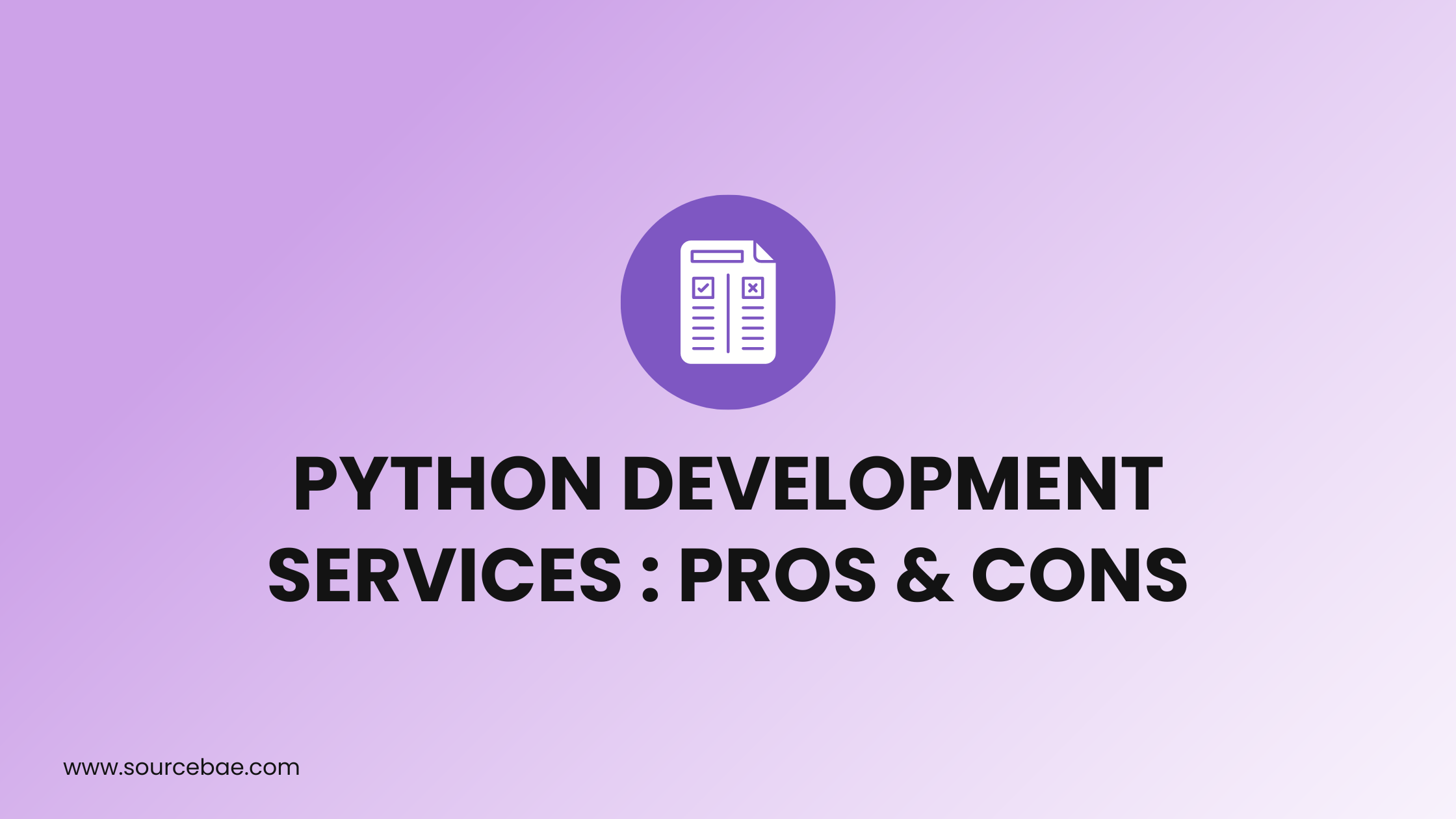In the realm of programming and software development, Python has emerged as a powerful and versatile language. With its user-friendly syntax and extensive libraries, Python offers numerous benefits for creating a wide range of applications. However, like any technology, Python development services come with their own set of pros and cons.
In this article, we’ll delve into the advantages and potential drawbacks of using Python for your development needs. Whether you’re a seasoned developer or a business owner exploring technology solutions, understanding these aspects can help you make informed decisions that align with your goals.
Python Development Services: Pros & Cons
Python Development Services: An Overview
Python, known for its simplicity and readability, has gained popularity across various industries. From web development to data analysis and machine learning, its versatility makes it a preferred choice for many projects.
Pros of Python Development Services
1. Easy to Learn and Use
Python’s intuitive syntax allows developers, both new and experienced, to write clean and concise code. This ease of learning accelerates the development process and reduces the learning curve for team members.
2. Vast Ecosystem of Libraries and Frameworks
Python boasts an extensive collection of libraries and frameworks that cover an array of functionalities. Popular libraries like NumPy, Pandas, and TensorFlow simplify complex tasks, enabling developers to focus on higher-level logic.
3. Cross-Platform Compatibility
Python is compatible with major operating systems, making it easy to develop applications that work seamlessly across different platforms. This compatibility reduces the need for extensive rewrites or adjustments.
4. Rapid Prototyping
The language’s dynamic nature and interpreted execution enable rapid prototyping. Developers can quickly iterate through ideas, leading to faster development cycles and improved time-to-market.
5. Strong Community and Support
Python boasts a vibrant community of developers who actively contribute to open-source projects and provide assistance through forums and discussions. This support network is invaluable when facing challenges or seeking best practices.
6. Suitable for Web Development
Python’s frameworks, such as Django and Flask, streamline web application development. They offer pre-built components and follow the “Don’t Repeat Yourself” (DRY) principle, enhancing development efficiency.
Cons of Python Development Services
1. Slower Execution Speed
While Python’s interpreted nature contributes to its ease of use, it can also lead to slower execution speeds compared to compiled languages like C++ or Java. This drawback might impact performance-critical applications.
2. Global Interpreter Lock (GIL) Limitation
Python’s Global Interpreter Lock restricts the execution of multiple threads within a single process. This limitation can hinder the parallel processing capabilities of multi-core systems.
3. Memory Consumption
Python’s dynamic typing and memory management can lead to higher memory consumption, which might be a concern for resource-constrained projects.
4. Mobile App Development Challenges
While Python is suitable for backend web development, it’s less common for mobile app development due to limited support for native app development.
5. Not Ideal for High-Graphics Games
Python’s performance limitations make it less suitable for developing high-graphics and resource-intensive games that demand real-time processing.
6. Version Compatibility
As Python evolves, maintaining compatibility between different versions can be a challenge. This issue can lead to unexpected behaviors when transitioning between versions.
Frequently Asked Questions (FAQs)
Is Python a good choice for beginners?
Absolutely! Python’s easy syntax and readability make it an excellent choice for beginners looking to learn programming.
Can Python handle large-scale applications?
Yes, Python can handle large-scale applications, but careful optimization and architecture design are crucial to ensure optimal performance.
What industries commonly use Python development services?
Python is widely used in web development, data analysis, scientific research, artificial intelligence, and machine learning.
Does Python development require high computational resources?
While Python is not as resource-efficient as some compiled languages, its resource requirements are usually manageable for most projects.
Is Python suitable for real-time applications?
Python might not be the best choice for real-time applications that require lightning-fast response times due to its interpreted nature.
How can I mitigate Python’s performance drawbacks?
Utilizing optimized libraries and integrating critical components written in other languages can help improve Python’s performance.
Conclusion:
Python development services offer a plethora of advantages, from its ease of learning and extensive library ecosystem to its cross-platform compatibility and strong community support. However, it’s essential to weigh these benefits against potential drawbacks like slower execution speed and the Global Interpreter Lock. Ultimately, the decision to use Python for development should be based on your project’s specific requirements and goals. By understanding both the pros and cons, you can make informed choices that align with your development objectives.
Remember, while Python might not be the one-size-fits-all solution, its versatility and wide-ranging capabilities can undoubtedly play a pivotal role in achieving your software development goals.





